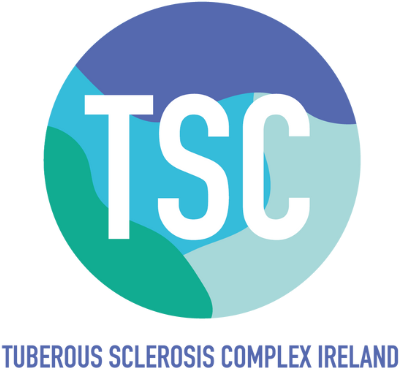Impressions from Neuroscience 2024 in Chicago
Judith Evens Ph.D.
I am a neuroscientist; I am also a mother to an adorable son who happens to have TSC. As part of my work as a neuroscientist, I presented at Neuroscience 2024 in Chicago this October. At the same time, I used the opportunity to get an update on the TSC space and would like to tell you a little about what I learnt about research in TSC while I was there.
Poster presentation at Neuroscience 2024
To give you some background Neuroscience is a conference organised every year by the Society for Neuroscience, it attracts 20,000 – 30,000 people every year: 22,000 people attended this year. It was held in the McCormick Centre in Chicago. Like many science conferences it is organised in lectures, symposia with several shorter talks and poster presentations. All the new and exciting information is usually exchanged at the posters. Topics from every corner of the neuroscience field are covered and there will definitely be someone working on something similar and/or relevant to your own research interests.
Around 10 presentations covered TSC this year; most of them were poster presentations and one talk in a nano-symposium, that is a very small symposium. This is a neuroscience conference, so the focus was one epilepsy as the nervous system manifestation in TSC. All research on TSC was at the basic science level and limited to cell cultures and mouse models. Neuroscience is not a clinical conference. Therefore, any new ideas or discoveries will not affect the treatment of individuals with TSC in the next 5 – 10 years because the large translational step from the bench to the bedside still must be made. But even so this year’s presentations made me hopeful and I want to tell you why.
I have picked two poster presentations I visited to talk about in a bit of detail. First, a group connected to the Cincinnati Children’s Hospital presented an improved mouse model of TSC that did not only have the genetic deletion of the TSC2 gene but also an additional induced brain lesion that produced a tuber like structure. This situation is more similar to patients because there is first the genetic deletion of the TSC gene and a second induced hit that causes a tuber like structural change. This makes it look much more like brain abnormalities seen in patients. This is the first time something like a tuber can be intensively studied. The group has already classified the seizure activity in these mice and the structural changes seen on a cellular level. The group plans to use this model in two ways in their research: (1) study how the epilepsy in TSC develops and if the development can be interrupted and (2) study how epilepsy could be treated with new compounds.
The second group based at the University in Atlanta succeeded in growing organoids from human stem cells of TSC patients. Organoids are tiny, self-organized three-dimensional tissue cultures that are derived from stem cells. Such cultures can be crafted to replicate much of the complexity of an organ, or to express selected aspects of it like producing only certain types of cells. The advantage of organoids is that they can be grown fast, and many studies can be conducted.
The advantage of using stem cells that originate from persons with TSC is that the results are much easier to translate to patients. It is already known that the pathologies reflect the presentation in patients. The group found abnormalities in the organoids grown from TSC stem cells spanned abnormal growth of nerve cells (neurogenesis), building of connections between nerve cells (synaptogenesis) and support cells in the nervous system (gliogenesis). These changes led to impaired communication between neurons and hyperactivity in the nerve cell network. This work will help the researchers to understand how TSC is connected to neurodevelopmental disorders and might also help the researchers to develop treatments.
But the most positive shift in the research focus I have observed is not the promise of a better understanding of TSC or potential new therapies, but a shift in research goals. I have observed this shift over the last 5 years. The first times I came acrossTSC mouse models was in the study of autism. The research group’s only interest in the model was that 1/3 of patient with TSC are autistic and this was reflected in social interaction studies in these models. This has now moved from using TSC (mouse) models to study autism to using TSC models to actually study TSC. This is where I gained hope, the researchers knew and could relate the difficulties of patients and families with TSC and where actively looking for a better understanding of the basics in TSC. I am looking forward to see the results in a few more years.



